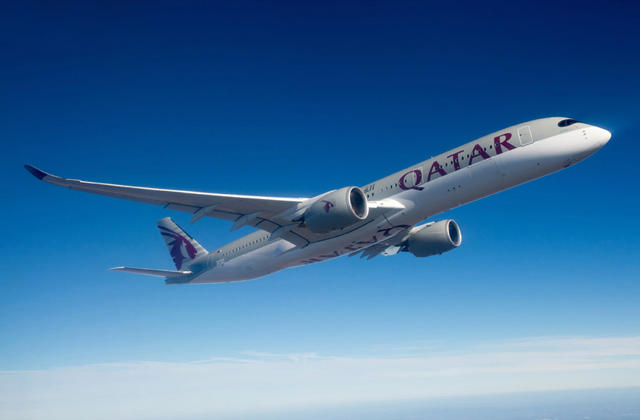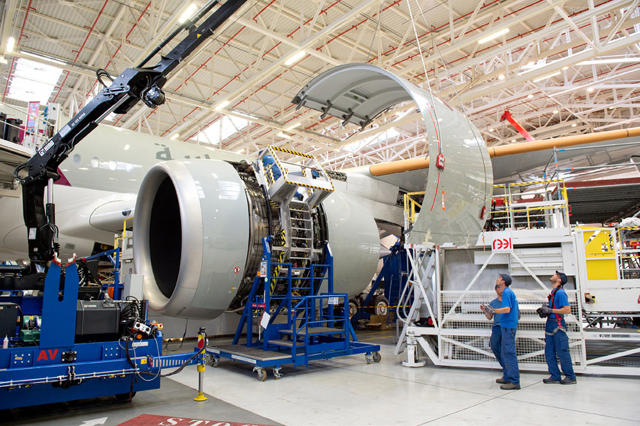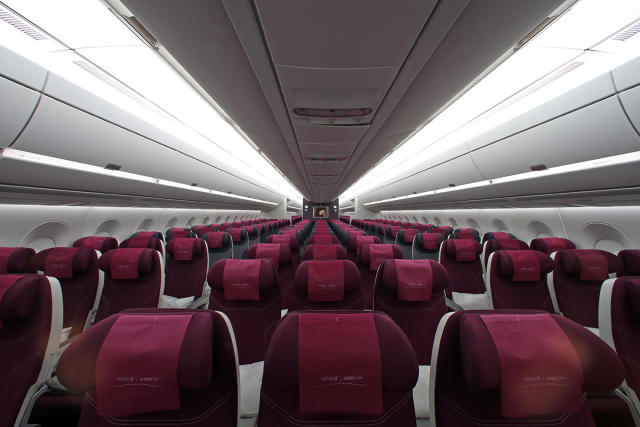Airbus And Qatar Airways Debut A Carbon Fiber aircraft That Curbs Jet Lag
The skies just got friendlier.
December 16, 2015
From labyrinthine security checkpoints to cramped seats and scant overhead storage space, air trip ranks among the most grueling experiences available in the market (until you might be one of the most rarefied few who spring for first-class). With its A350 XWB jet, Airbus integrates the most recent design and engineering tricks to quell a number of the headaches for flyers, carriers, and pilots. Chief among them? Jet lag.

“The design course of used to be about optimization, pushing the constraints, and opening up the field of solutions,” Alain De Zotti, chief engineer of the A350 XWB application at Airbus, says. The producer debuted the design in early 2015, but the first airplane to land in the united states arrived courtesy of Qatar Airways final week. With the A350, De Zotti’s workforce devised ways in which they hope make flying extra energy-environment friendly, aerodynamic, and at ease. On prime of that, they had to be sure that the plane could be simply as technologically sound today as at the finish of its projected 30-12 months lifespan. With $15 billion worth of research and development beneath its belt, Airbus is hoping that its no-nonsense method to design and engineering will lend a hand it best possible the competitors—specifically the Boeing 787 Dreamliner and 777 long-distance planes.

A Lighter trip
probably the most greatest differences within the Airbus A350 in comparison with older fashions is its composition. Over 50% of the construction is made from carbon fiber-strengthened plastic for light-weight energy and sturdiness. (The composite is much less vulnerable to corrosion than traditional aluminum planes.) the fabric has been deployed in aircrafts previously, but no longer in such huge proportions. The lighter the plane, the much less energy you need to propel it. To lend a hand with aerodynamics, the engineers designed the wings to be much better in size (about 20% larger than previous generations of planes) and span (about 10% wider) and to have a form that was inspired through birds’ wings. This reduces drag and noise and improves performance at low speeds. The engineers additionally better the flap machine—most often the flaps follow wind path but the A350’s flaps apply the flight path path— which makes the experience smoother. These measures—plus ultra-environment friendly Rolls Royce engines—lead to gasoline financial system that Airbus claims is 25% better than in a similar way sized planes from rivals.

taking out Jet Lag
Qatar Airways currently flies its fleet of A350s to Europe, the U.S. and Asia—journeys that traverse many time zones. To alleviate the physical toll and stress of screwing with a body’s interior clock, the aircraft is equipped with LED lights that change their coloration temperature to mimic the solar’s pure glow and are timed with natural circadian rhythms. to keep air from feeling stale, the aircraft’s filtering machine changes over the air within the aircraft each two to three minutes. The cabin is pressurized to 6,000 toes, which Airbus claims makes it extra relaxed for passengers.

extra space (Thank God)
The fuselage is wider to accommodate higher passenger seats in economic system classification—simply an extra inch over the usual width—and more straightforward motion down the aisles. since the seat configuration varies from provider to service and the competition for one of the best industry and firstclass cabins is so fierce—”trade classification is now like top notch used to be and first-class is like little residences,” De Zotti says—Airbus designed the internal to be adaptable so that carriers can swap out seats and tweak configuration much more simply than prior to now. This philosophy extends to the way laptop hardware integrates with the design, making avionics and tool improvements are much less cumbersome.
“We’re trying to make the jet related for the long run,” De Zotti says. “there is an open architecture that may evolve to welcome new functions and can take care of the evolution of technology.”
Qatar Airways is likely one of the first carriers to introduce the A350 to its fleet. Its go back and forth to ny was once the primary time the plane landed stateside. Heading again to Doha, the aircraft abruptly aborted takeoff as a result of a short runway. although no problems—instead of prolonged supply occasions—have been reported with the new A350 design, so much can go wrong with planes. for instance, Boeing’s 787 Dreamliner has suffered from technical and mechanical problems considering its launch. After the 787’s launch and recognition with carriers, Airbus retooled its approach with the A350. Let’s hope that any kinks within the design had been ironed out all through its 2,600 hours of take a look at flights.
[All Photos: courtesy Qatar Airways]
fast company , learn Full Story
(74)













